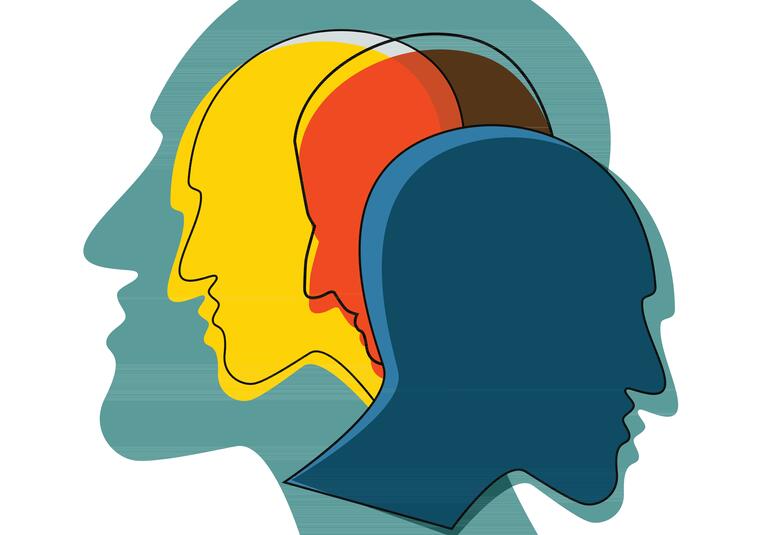Cognitive symptoms and impairment in depression rank in importance alongside emotional and physical symptoms and have a profound impact on function. Yet common scales used to measure depression do not adequately capture the problems with cognition experienced by patients. The newly validated THINC-it tool changes this picture.
In 2017, the World Health Organization announced that major depressive disorder (MDD) was the world’s leading medical cause of disability.
In terms of health-adjusted life years, MDD imposes a greater burden on its three hundred million sufferers worldwide than lung, colorectal, breast and prostate cancers combined. It is a condition that impairs function at work, school and in the family – ie in pretty-much all aspects of life. So it is little wonder that people with MDD place a high value on functional recovery.
When Zimmerman et al asked patients with MDD about the outcomes they most valued, feeling like their usual selves and returning to normal levels of functioning at home and work were top of the list. These factors – along with positive mental health -- ranked above relief from the symptoms of depression per se, Raymond Lam (University of British Columbia, Vancouver, Canada) told the meeting.
At diagnosis, most patients with MDD have functional impairment. Fried’s data from the STAR*D study show this is severe in 68% of cases. Severity of depression is associated with greater loss of productivity at work. According to a study by Professor Lam and colleagues, 52% of depressed patients report that cognitive difficulty severely interferes with their occupational functioning. Cognitive measures account for more variability in workplace performance that total severity of depression as measured by HAM-D17.
MDD is associated with impaired function at work, school and in the family
Cognitive dysfunction common and persistent
Data from the Netherlands Study of Depression and Anxiety show that functional impairment can persist despite symptomatic recovery: even after a year of remission, people who had had MDD showed impairment relative to controls.
Patients with current depression are impaired in their executive function, memory and attention. In summary, cognitive dysfunction is on a par with emotional and physical symptoms in terms of Importance. Yet the most prominent tools for measuring the severity of MDD, such as the HAM-D and MADRS, do not adequately capture the difficulties in concentration, indecisiveness and poor memory that patients report as posing problems.
Hence the role of the THINC-it® program. http://thinc.progress.im/en/content/thinc-it-about This aims to raise awareness of the need to identify cognitive dysfunction in depression and to share knowledge about the tools available to recognize, measure and ultimately treat this long-neglected aspect of the disease.
THINC-it® meets a need
US Medical guidelines now recommend evaluation of cognition, as well as functional outcome
Evidence that different antidepressants vary in their efficacy in combating cognitive dysfunction provides an added rationale for measuring cognitive impairment in routine clinical practice. This was difficult to achieve when we had no validated, easily administered measures of cognitive function, but this situation has now changed with the development of the THINC-it® tool, said Roger McIntyre (University of Toronto, Canada).
The tool incorporates several established tests in one simple, computerized program that provides information on which one can act, and at the point of care.
In many people with MDD, the presence and persistence of cognitive problems mediate poor outcomes on MADRS, HAM-D and functional parameters. Targeting cognition is therefore a key to improving function
In a recently published study, which involved 14 centres in Canada, Australia and Europe, 100 patients aged 18-65 years with recurrent MDD were compared with 100 healthy controls matched for age, sex and education. On mean scores on THINC-it®, 44% of people with MDD were one standard deviation or below healthy controls. Ninety-eight percent of healthy controls performed better than the mean score of patients with MDD.
Authors therefore concluded that THINC-it® is a valid and sensitive tool for detecting cognitive dysfunction in people with major depression. It delivers on what a screening tool should do. Ninety percent of MDD patients and controls successfully completed the THINC-it® battery. On average, they took 10-15 minutes. Feedback from users was positive.
In many people with MDD, the presence and persistence of cognitive problems mediate poor outcomes on MADRS, HAM-D and functional parameters. Targeting cognition is therefore a key to improving function.
Potential cross-diagnostic value
Bernhard Baune (University of Adelaide School of Medicine, Australia) agreed that cognition and its evolution in response to treatment are important to functional outcome. To provide data, Professor Baune and colleagues have begun the Adelaide Cognitive Function and Mood Study (CoFaMS). This will prospectively chart cognitive performance and emotional processing in patients with a primary diagnosis of MDD or bipolar disorder.
Cognitive impairment – relative to healthy controls – can be reliably detected with the new, free, self-adminstered THINC-it® tool that integrates subjective and objective measures
An early finding is that 25% of patients report that their reduced workplace productivity relates to cognitive impairment.
THINC-it® is being used as part of the study; and Bernhard Baune has also used the new tool with encouraging results in schizophrenia, suggesting the tool has cross-diagnostic value – which may extend to ADHD.
THINC-it can be downloaded at http://thinc.progress.im/en/content/thinc-it-about . The report is from an ECNP satellite symposium sponsored by Lundbeck.
Our correspondent’s highlights from the symposium are meant as a fair representation of the scientific content presented. The views and opinions expressed on this page do not necessarily reflect those of Lundbeck.







